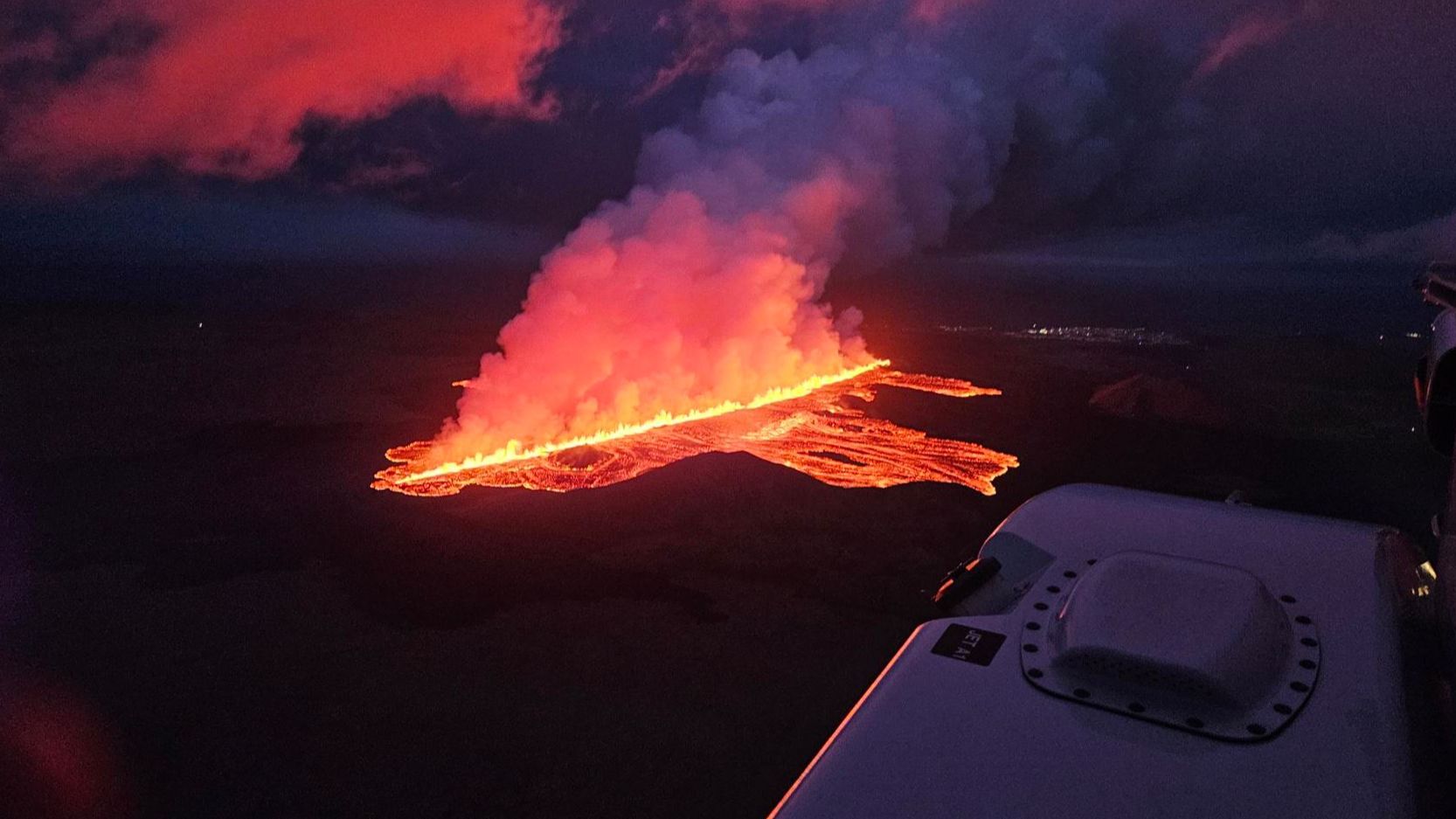Iceland suffers a new eruption on the Reykjanes Peninsula, the sixth since December

Reykjanes PeninsulaThe sight has been seen once again in the southwest of Iceland New volcanic eruptionAs the country’s meteorological authorities explained in a statement, this is the sixth rainfall in the region since December. Previous studies had already shown the accumulation of underground magma, which led to warnings about new volcanic activity in the area located just south of Iceland’s capital, Reykjavik.
“it has begun Eruption at Sundnuksgigarðr, east of Mount Sillingafell“, indicated the Icelandic Meteorological Office (IMO), adding that the eruption began at 9:26 pm (local time and GMT) after a series of earthquakes.
The most recent eruption occurred on the Reykjanes Peninsula, where about 30,000 people live – about 8% of the country’s total population – It started on May 29 and It ended on June 22 after spewing fountains of molten rock for 24 days. The recurrence of the event is just one example of the challenge facing the island nation of about 400,000 people, as scientists warn the region could face repeated outbreaks for decades or centuries.
The Icelandic Foreign Ministry has indicated that the impact is “limited to a local area near the explosion site” and does not pose a threat to life. The area has been evacuated and there have been no disruptions to domestic or international flights.
“The Icelandic authorities are well prepared for the seismic and volcanic activity that occurs regularly as a feature of our country’s natural geography,” the ministry said.
Nine explosions since 2021
Nine eruptions have occurred on the peninsula since 2021, following the reactivation of geological systems that had been dormant for 800 years. In response, authorities have built artificial barriers to redirect lava flows away from critical infrastructure such as the Svartsengi geothermal power plant, the Blue Lagoon open-air spa and the town of Grindavik.
Grindavík, where one of Iceland’s main fishing ports is located. About 4,000 people Which have been evacuated several times since last December. Volcanic eruptions on the Reykjanes Peninsula are so-called fissure eruptions, which usually do not disrupt air traffic, as they do not cause large explosions or significant dispersion of ash into the stratosphere. Before March 2021, there had been no eruptions on the peninsula for eight centuries.
Iceland is home to 33 active volcanic systemsThe largest number in Europe. This Located on the Mid-Atlantic RidgeA fault on the ocean floor that separates the Eurasian and North American tectonic plates, causing earthquakes and explosions.